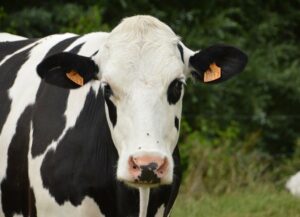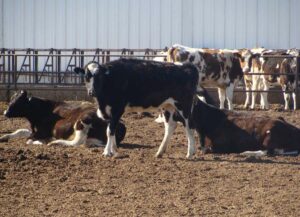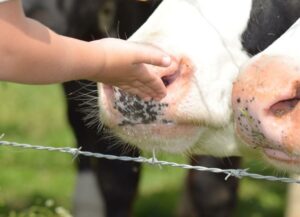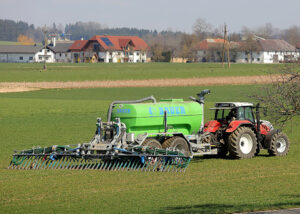Nuria García
Bovine leukosis (BL) is a lifelong disease of dairy cattle caused by the bovine leukosis virus. Although most infections appear to be subclinical, a proportion of cows over 3 years old (30 – 50%) develop persistent lymphocytosis, and a smaller percentage (5%) develop malignant tumors (lymphosarcomas) in various internal organs. It has been reported this disease can reduce milk production (up to 1000 kg/lactation), cow fertility, and longevity due to premature death of cows. Moreover, it produces economic losses associated with condemnation of carcasses after slaughter.
As a result of decades of systematic control and eradication programs, BL has been successfully controlled and eradicated from many countries (some countries in the European Union, Australia, New Zealand…); however, BL is common in North American dairy cattle. Recent surveys indicate that 89% of US dairy farms had cattle seropositive for BL. Similarly, in a 2015 study from Canada, 78% of 315 surveyed dairy herds from 7 provinces had antibodies to BL.
There is no curative treatment or vaccines for this viral infection in cows so dairy producers must rely on management practices to eradicate BL from their herd. A study from University of Calgary, Alberta, Canada, published recently in Journal of Dairy Science estimated the economic impacts of BL infection in Alberta dairies and the financial benefits for its control. Using a decision tree model, the researchers (Kuczewski et al., 2019) simulated the effects of 4 control strategies on the prevalence of BL and farm’s profitability. All adult animals were tested in the first year of the model, whereas only negative animals and replacement animals were retested in the following years. These were the control programs:
- Testing and implementing all the best management practices: fly control, disinfection of equipment, use of an electric dehorner, single-use of needles, and single use of examination sleeves for artificial insemination and transrectal pregnancy diagnosis (palpation or ultrasonography), and colostrum management (freezing or pasteurization colostrum, or feeding colostrum replacer).
- Testing and implementing some of the best management practices: disinfection of equipment, electric dehorner, and single-use of needles and examination sleeves.
- Testing and culling: slaughtering test-positive cows and implementing all best management practices with freezing colostrum.
- Testing and segregating: separation of test positive animals combined with the implementation of all the best management practices with freezing colostrum.
Each of these strategies was compared with a no control on-farm approach during a 10-year period for an average Alberta dairy with 146 animals. The median within-herd prevalence (infected cows) of BL in this study was 39.5% and the average annual cost for implementing the strategy 1 with , frozen, pasteurized or commercial colostrum was Can$31.7, $38.9, and $84.7, respectively; strategy 2 cost $19.3; strategy 3 $35.3; and strategy 4 $46.4.
The authors reported the implementation of any one of the 4 control strategies evaluated in this model resulted in a positive net benefit, making BL control economically beneficial. Comparing with a no control strategy, the average net benefit per cow per year over a 10 year period was Can$131 for all the best management practices using a freezer, $124 using a pasteurizer, and $78 using powdered colostrum; $103 for some of the best management practices, $159 for test and cull strategy, and $159 for test and segregate approach.
In summary, test and cull and test and segregate were the most beneficial strategies because they are very effective preventing new infections and reduce BL prevalence quickly. These findings encourage implementation of control programs and eradication of BL on dairy farms.
Reference
Alessa Kuczewski, Henk Hogeveen, Karin Orsel, Robert Wolf, Jada Thompson, Eldon Spackman, and Frank van der Meer. 2019. Economic evaluation of 4 bovine leukemia virus control strategies for Alberta dairy farms. J. Dairy Sci. 102:2578–2592.
© 2019 Dairy Knowledge Center, LLC. All Rights Reserved.











